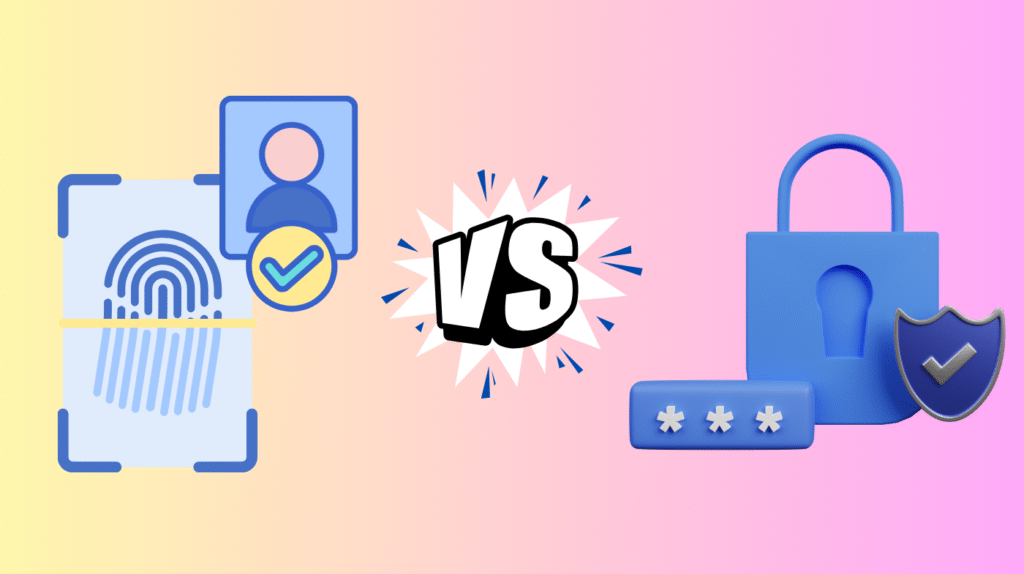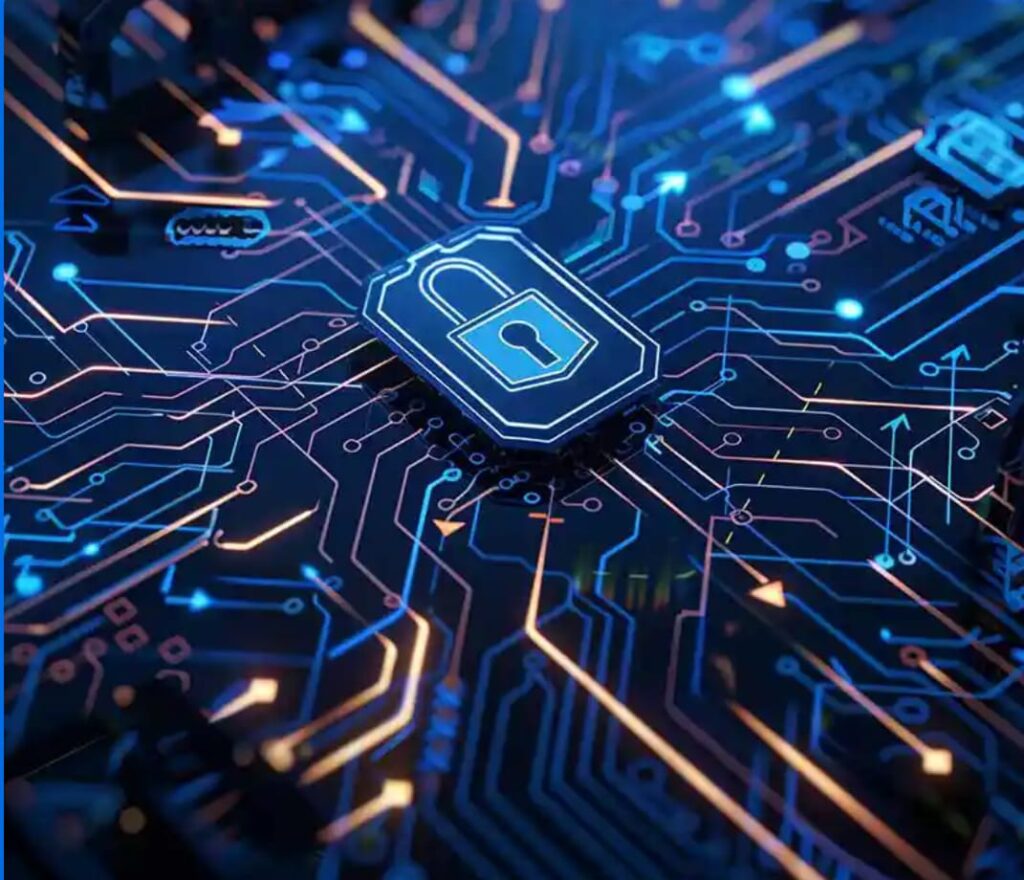
Your digital identity hangs in the balance of a critical choice. Should you trust your fingerprint or rely on a complex password? This isn’t just about convenience—it’s about protecting everything you value online. Cybercriminals are evolving faster than ever, making traditional security methods obsolete overnight.
This comprehensive analysis reveals the hidden vulnerabilities in both biometric systems and password-based authentication. You’ll discover why hybrid security approaches are becoming essential, learn the shocking truth about biometric data breaches, and master the art of creating unbreakable passwords.
Most importantly, you’ll walk away with a personalized security strategy that combines the best of both worlds. The stakes have never been higher, and the solution might surprise you.
Understanding Biometric Authentication
Biometric authentication leverages your body’s unique traits like fingerprints, facial features, or even voice patterns to verify identity in a fast, secure, and user-friendly way. Unlike traditional passwords, biometrics are inherently tied to the individual, making them nearly impossible to forget or share.
What Are Biometrics?
Biometric authentication uses unique physical or behavioral characteristics to verify identity. These include fingerprints, facial recognition, iris scans, voice patterns, and even typing rhythms. Unlike passwords, biometrics are inherently tied to the individual, making them theoretically impossible to forget or lose.
The technology works by capturing biometric data, converting it into a digital template, and storing it securely. During authentication, the system compares new biometric input against stored templates to verify identity.
Types of Biometric Authentication
Physiological biometrics rely on physical characteristics like fingerprints, facial features, and retinal patterns. These remain relatively stable throughout a person’s lifetime, making them reliable for long-term authentication systems.
Behavioral biometrics analyze patterns in human behavior, such as typing rhythm, gait analysis, or voice recognition. While more dynamic than physiological traits, they offer additional security layers and are harder to replicate.
Multi-modal biometrics combine multiple biometric factors for enhanced security. This approach significantly reduces false positives and provides backup authentication methods if one biometric fails.
Advantages of Biometric Systems
Enhanced security represents the primary benefit of biometric authentication. Since biometric traits are unique to each individual, they’re extremely difficult to replicate or steal. Even if someone obtains your biometric data, they cannot physically reproduce your fingerprint or facial features.
Convenience and speed make biometrics highly user-friendly. Users don’t need to remember complex passwords or carry physical tokens. Authentication happens in seconds with a simple touch or glance.
Non-transferable nature ensures that biometric credentials cannot be shared or stolen in traditional ways. You cannot accidentally reveal your fingerprint like you might share a password.
Limitations of Biometric Authentication
Privacy concerns arise from storing sensitive biological data. If biometric databases are compromised, the consequences are permanent since you cannot change your fingerprints or facial features like you would change a password.
False positives and negatives can create user frustration. Dirty fingers, lighting conditions, or minor injuries might prevent successful authentication, requiring backup authentication methods.
High implementation costs make biometric systems expensive to deploy and maintain. Organizations need specialized hardware, software, and ongoing technical support.
The Power of Strong Passwords
Strong passwords are your first line of defense in the digital world, protecting personal data and sensitive accounts from cyber threats. By combining length, complexity, and uniqueness, they become nearly impossible to crack through brute force or credential stuffing attacks.
Characteristics of Strong Passwords
Strong passwords serve as the foundation of digital security. They typically contain at least 12-15 characters, combining uppercase letters, lowercase letters, numbers, and special symbols. The complexity makes them exponentially harder to crack through brute force attacks.
Password length significantly impacts security strength. A 12-character password with mixed elements would take approximately 34,000 years to crack, while a simple 12-character numeric password takes only 25 seconds.
Uniqueness remains crucial for password security. Using different passwords for each account prevents credential stuffing attacks, where hackers use stolen credentials across multiple platforms.
Benefits of Password-Based Authentication
Flexibility and control allow users to change passwords immediately if compromised. Unlike biometrics, passwords can be updated instantly without requiring new hardware or biological changes.
Universal compatibility makes passwords work across all devices and platforms. Every system supports password authentication, ensuring broad accessibility and implementation ease.
Cost-effectiveness represents a significant advantage. Password systems require minimal infrastructure investment compared to biometric hardware and software solutions.
Password Generation and Management
Complex password generators create truly random, secure passwords that humans couldn’t easily remember or guess. These tools ensure optimal security by eliminating predictable patterns and personal information that hackers might exploit.
Modern complex password generator tools offer customizable options for length, character types, and specific requirements. They eliminate human bias in password creation, producing genuinely random combinations that maximize security effectiveness.
Password managers complement strong password practices by securely storing and automatically filling credentials. Users only need to remember one master password while maintaining unique, complex passwords for every account.
Common Password Vulnerabilities
Weak password practices include using dictionary words, personal information, or simple patterns. These make accounts vulnerable to various attack methods including brute force, dictionary attacks, and social engineering.
Password reuse across multiple accounts creates cascading security failures. When one account is compromised, hackers can access all accounts using the same credentials.
Inadequate password policies in organizations often allow weak passwords, infrequent changes, or shared credentials, creating systemic security vulnerabilities.
Comparative Analysis: Security Effectiveness
Explore the strengths and weaknesses of biometric authentication versus password-based systems in terms of attack resistance, user experience, and implementation.
Attack Resistance Comparison
Biometric systems resist traditional password attacks like brute force, dictionary attacks, and credential stuffing. However, they’re vulnerable to spoofing attacks using photos, recordings, or artificial replicas of biometric traits.
Strong passwords created with a complex password generator resist most automated attacks when properly implemented. They’re vulnerable to phishing, keylogging, and social engineering attacks that trick users into revealing credentials.
Hybrid approaches combining both methods provide the strongest security posture. Two-factor authentication using passwords plus biometrics creates multiple security layers that are extremely difficult to bypass.
User Experience Factors
Biometric authentication offers superior convenience with faster login times and no memory requirements. Users simply present their biometric trait for instant access, eliminating typing errors and forgotten passwords.
Password authentication requires more user effort but provides greater control. Users can change passwords immediately if needed and don’t depend on hardware functionality or environmental conditions.
Accessibility considerations vary between methods. Biometrics may exclude users with certain disabilities or injuries, while passwords work universally but may challenge users with memory or motor difficulties.
Implementation Considerations
Scalability differs significantly between approaches. Password systems scale easily across unlimited users and devices, while biometric systems require hardware investments that increase with user count.
Maintenance requirements favor password systems for simplicity. Biometric systems need regular calibration, hardware updates, and technical support, while passwords require primarily policy enforcement and user education.
Regulatory compliance considerations affect both methods. Biometric data often faces stricter privacy regulations, while password policies must meet industry-specific security standards.
Frequently Asked Questions
Are biometrics more secure than strong passwords?
Biometrics offer stronger inherent security because they’re unique to each individual and cannot be easily replicated. However, strong passwords generated by a complex password generator and properly managed can provide comparable security.
Can biometric data be hacked or stolen?
Yes, biometric data can be compromised if databases are breached. Unlike passwords, biometric traits cannot be changed if stolen, making data protection crucial. Organizations must implement robust encryption and security measures to protect stored biometric templates.
What happens if biometric authentication fails?
Backup authentication methods are essential for biometric systems. Most implementations include alternative options like passwords, PINs, or secondary biometric traits. System designers must plan for various failure scenarios, including hardware malfunctions, environmental conditions, or temporary physical changes.
The Verdict: Choosing Your Security Strategy
The biometrics versus strong passwords debate doesn’t have a universal winner. Each approach offers distinct advantages suited to different scenarios and requirements. Biometric authentication excels in convenience and inherent security, while strong passwords provide flexibility, universal compatibility, and cost-effectiveness.
Modern security strategies increasingly favor hybrid approaches that combine both methods. Using a complex password generator to create robust passwords, then adding biometric authentication as a second factor, provides comprehensive protection against diverse threat vectors.




